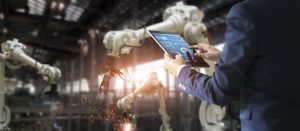It sometimes drives me crazy when I hear people talk about how they’d like to be more energy efficient but it costs too much, so they stick with the old way of doing things. In more and more cases, that is simply no longer true – you can be energy efficient and save money at the same time, both up front and over the long term.
Case in point: new building construction. Imagine if I told you there was a way you could build a new, multi-story office building that could fit 11 floors in the space of a traditional building’s 10, that was 40% faster to build, provided more flexibility for tenants and still saved 20% in energy vs. traditional designs. Interesting, right?
That’s exactly what under floor air distribution (UFAD) systems bring to the office building world.
In a traditional office building, warm and cool air is delivered from ducts in the ceiling into the room, then returned through the ceiling to a different duct. With a UFAD system, empty space below the floor acts as a plenum through which air is delivered through vents into each room. The air exits via vents in the ceiling into another plenum above the ceiling.
The result is a room that’s far more comfortable for occupants because air becomes stratified. Cooler air remains close to the floor while air with human-friendly temperatures is in the middle – where occupants are – and higher temperature air rises towards the return plenum.
What’s more, air comes in through vents in movable tiles in the floor. Since the vents can be placed anywhere, tenants have maximum flexibility in terms of where they want to place desks, furniture and such – and they can reconfigure at will.
The systems are also more energy efficient because they reduce by about 30% the volume of air that has to be heated or cooled; it’s only that middle layer where humans live that’s of concern. With a traditional system in summer months, for example, to produce a comfortable room temperature of about 24ºC (75°F) it takes a supply air temperature of 13° to 15° C (55° to 59°F) – which is mighty cold if you happen to be near one of the vents. With a UFAD system, the supply temp is around 18° to 20° C (64° to 68°F). That results in an energy savings of around 20%.
Example of Schneider Electric UFAD system, Climaflair, compared to traditional systemWhat’s more, UFAD systems can also dramatically reduce construction time. With a traditional building, each floor has a concrete slab foundation. On top of that, the builder has to pour another layer of finishing material to ensure the floor is flat before laying carpet, wood or other flooring. It takes time to both lay down the finishing layer and wait for it to dry.
With UFAD, that issue goes away. A series of pedestals is installed on top of the slab floor, creating space between the slab and the finished floor, which sits on top of the pedestals. This eliminates the need to pour that additional finish layer. Similarly, a dropped ceiling is used to create the return plenum above the room.
No ducting is required in either the floor or the ceiling, which further eases the construction job – and reduces expense. And those plenums provide plenty of room for electrical and networking cables along with auxiliary piping. What’s more, less space is required for each floor – enough such that an 11-story building using UFAD is about the same height as a traditional 10-story building.
So, let’s review the benefits of UFAD systems for all concerned:
- Builders: 40% reduction in construction time
- Owners: More valuable occupied space in the same footprint (11 floors vs. 10) and a 20% energy reduction
- Tenants: Increased comfort and improved flexibility in terms of office design
To learn more about the Schneider Electric UFAD system, called Climaflair, check out this video.



